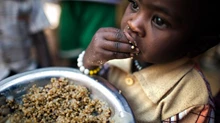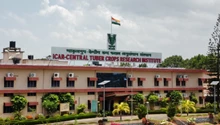
The sweet orange (Citrus sinensis), a member of the botanical family Rutaceae, is one of the world's fastest-growing citrus species. The fruit provides several health advantages because of its high vitamin C, potassium, and variety of nourishing antioxidants and minerals content. In addition to eating, fresh fruit, its peel, and juice are often used in the manufacture of pharmaceuticals. It also lessens the risk of stroke, high blood pressure, kidney stones, high cholesterol, and asthma.
Popular Sweet Orange Varieties:
Sathgudi
The juicy and delicious sweet orange, which has a globular form and a thin, semi-glossy peel, is grown widely throughout South India (AP) and is in high demand. Oranges that are fully matured can weigh between 140 and 160 grams and have few to no seeds. It has a 49% juice level and is divided into 10 to 12 portions. Sathgudi produces the biggest yield of delicious oranges.
Mosambi
It develops a round form and thick, rough skin. It tastes sweet, has an acidity level of 0.45%, and contains around 43% juice. It has a larger seed content and weighs more than Sathugadi, weighing between 150 and 220 grams. It is grown mostly in Maharashtra.
Batavian
While sharing many traits with Sathgudi, the popular Andhra Pradesh sweet orange variety often grows with yellow spots over the backdrop of green. Batavian oranges are mostly planted along the shore, where they are properly guarded against the local sucking moths.
Malta
India is the source of Malta, a citrus fruit. It is frequently referred to as sangtra. It takes up around 30% of the entire citrus growing area. Commercial citrus species are cultivated in India, including mandarin and sweet orange. The nation's center and western regions produce more mandarin oranges each year. After the fruits of the mango and banana, India comes third in the production of oranges. In India, the states of Rajasthan, Himachal Pradesh, Punjab, and Uttar Pradesh all cultivate oranges.
Jaffa
The tree resembles a pineapple tree in appearance. Fruits have a spherical shape and a larger size with a yellowish-orange skin tone. A single fruit contains 9–12 seeds. Jaffa ripens in December and approx 54 kg of fruit is produced on average per plant.
Valencia Late
Vigorous, heavy bearer trees with medium-sized fruits. The fruit has an oval form and turns golden yellow when ripe. Fruit doesn't start to mature until February and per fruit and there are 2 to 7 seeds. 40 kilograms of fruits are typically produced per plant.
Blood Red
Blood Red trees are bigger than Jaffa trees and the fruits are average size with a deep orange color on maturity. The flesh of a red tone is 1-2% acidic. There are 9–12 seeds per fruit. Juice is a reddish hue and approx. 43 kg of fruit is produced on average per plant.
Pineapple
Medium-sized trees with a spreading nature with juicy, medium-sized fruits. There are 10–20 seeds per fruit. Fruit ripens between December and January and 38 kg of fruit is produced on average per plant.
Conditions for Growing Sweet Oranges
Soil:
The optimal soil for growing sweet oranges is loamy, well-drained soil with a consistent texture up to 2-3 meters below the topsoil. Additionally, it can only be planted on heavy soils if it can drain properly; yet, it often produces a lower yield than the former. For the best yield, keep the pH of the soil between 6.5 and 7.5.
Climate:
A tropical to semi-tropical climate with annual precipitation of 600–700 mm is ideal for growers to cultivate the premium sweet oranges that the market demands. For optimal results, the temperature should be between 30 and 40 degrees.
Planting Material
Planting virus-free plants is ideally the best material. Rootstocks should be procured from renowned and trustworthy sources like Nurseries, Institutions, or Research Centers.
Land Preparation
A 1 square meter trench should be excavated for each seedling after the agricultural field has been plowed to a fine tilt up to deep earth. Before planting, fill the holes with topsoil that has been well mixed with 15-20 kg of FYM, 500–600 grams of superphosphate, and 30 grams of methyl parathion@2% (to protect plants from fungal infection).
Planting Time and Spacing
The best time to plant is from July through December. Keep the bud junction above the soil line while planting. To prevent wind-related damage, regularly water developing seedlings and stake them. Maintain a 6 m × 6 m gap between each plant.
Manure and Fertilizers
|
Manures/ Fertilizers |
1st year |
Yearly Increase |
6th Year Onward |
|
FYM |
20 kg |
5 kg |
35-40 kg |
|
Nitrogen |
100 g |
100 g |
600 g |
|
Phosphorus |
50 g |
50 g |
300 g |
|
Potassium |
25 g |
25 g |
300 g |
Irrigation Time
Consider modest irrigation once every ten days after planting, but avoid overwatering, which promotes mold growth and root rot. Go for deep irrigation after two irrigations because roots are now able to reach deeper soil layers, whereas deep watering is great for providing water straight to roots. Remember that plants need more frequent watering during flowering and fruiting, and that inconsistent watering might result in fruit drops. Don't water during the monsoon.
Pruning and Training
Eliminate falling branches, unhealthy, or broken ones at regular intervals to encourage plants to develop vigorously. Continue to remove shoots in the primary stage that extend up to 50 cm from the ground. A good strategy is to leave the main stem free so that it can thrive, with evenly spaced branches on either side. In humid areas, refrain from trimming plants that are in the process of yielding fruit. For optimal results, use 1% Bordeaux paste.
Intercrops
Intercropping can help producers make money, especially when delicious oranges are in the pre-bearing stage. Think about cultivating cucurbitaceous plants as well as short-term leguminous plants including black gram, green gram, cowpea, beans, Bengal gram, and cluster beans.
Harvesting
All delicious oranges typically produce fruit after the fourth year. One month before harvest, spraying fruits with potassium nitrate at a rate of 5–10 grams per liter of water can increase fruit size, smooth rinds, and juice content. Due to climate advantages, South India plants two crop cycles every year, with the first cycle taking place from March to May and the second from August to September. The average output is estimated to be close to 16–20 tons per acre.












